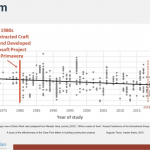Touchplan employees have worked in the construction industry for years. We thought it was high time we put our thousands of hours of onsite experience to good use. So we sat down with the schedulers, planners, and project managers in our office to put together their 5 tips to better planning. Planning smarter can be super easy if you just start here with the Touchplan way!
Start Collaborating
Collaborating gives group members a sense of ownership. Who doesn’t love setting their own schedule? I know that I do, and when I’m in charge instead of being told what to do, I work my best, because I’m the one who set my plan.
Keep Talking
Once your team has worked together to come up with the plan, continue talking with all project members. Communication reduces the idle time on your project. When you and your project teams are talking there is a remarkable decrease in the time between work handoffs.
Stay up to date on progress
You will have significantly fewer headaches when you know what is happening onsite. Real time knowledge of your project status keeps you on top of the game. You’ll be able to identify and remove future blockers. This will let you rapidly troubleshoot your delays to keep them from interrupting your workflow.
Hold the slowpokes accountable
The three previous steps make it possible for us to do this one. When we collaborate, when we communicate, when we maintain awareness we know the who and what is blocking progress and we can hold them accountable. Don’t use this information to shame teams, use it to look forward and push them to improve for the next week.
Meet consistently
That’s it. Don’t slack and don’t skip. None of these tips work unless you apply them consistently and continuously throughout the duration of your project.
So what happens when you start taking these steps? It won’t be long before you see the benefits of consistent, smarter planning. What can you expect on future projects?
- Fewer Bottlenecks. Smarter planning allows you to identify the places where work stoppages are likely to occur. When you know where a problem will exist, you can plan accordingly and avoid it. This planning system allows you to work out the contingencies and prevent idle time on site.
- Smarter allocation of project capital. Planning ahead also makes sure that you are not spending money on resources until they are needed. This system-wide approach is far more effective at lowering your cost, because it eliminates waste along the entire production stream as opposed to at individual points or problem areas.
- Reduction in the amount of rework. Work is done only when it needs to be done. Once the project has begun, these savings continue because work is completed only when it is required. This prevents damaged product that would require rework or replacement.
- Correct staffing numbers. The system works because it relies on the expertise of crew leaders to set the work timelines and numbers. This improves predictions of labor required, and prevents you from having to call in more people, or send guys home.
All of these benefits serve to create a more predictable and reliable production program.










